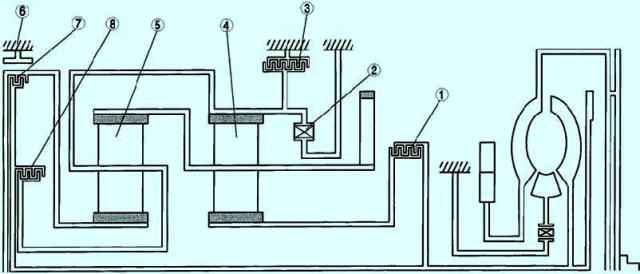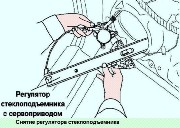Design and operation of the Mazda 3 transmission mechanism
The transmission mechanism (Fig. 1) consists of three pairs of clutches, a brake, a band brake, a one-way clutch and two pairs of single planetary gears
The planetary gear changes gear ratio according to the driving conditions of the vehicle.
In the transmission mechanism, hydraulic pressure is transferred from the control valves or shift solenoids A, B or C (duty cycle) to the clutches and brakes.

Forward clutch
Transmits torque from the turbine shaft to the front sun wheel.
Operates in 1st, 2nd or 3rd gear forward range.
Clutches 3/4
Transmits torque from the turbine shaft to the rear planet carrier.
Operates in 4th or 3rd gear forward range.
Reverse clutch
Transmits torque from the turbine shaft to the rear sun wheel.
Works when the vehicle is in reverse.
Brake bands 2/4
Stops the rotation of the reverse drum and secures the rear sun wheel.
Operates in second or fourth gear.
Reverse and low gear brake
Fixes the rotation of the front inner gear.
Operates when the vehicle is in reverse or in first gear (l range, HOLD mode)
One-sided clutch
Inhibits counterclockwise rotation of the front inner gear in first gear.
Planet gear
The planetary gear works in the transmission by engaging/disengaging the clutches and/or brakes, converting the driving force from the turbine shaft and transmitting it to the final drive gear.
All directions of rotation are viewed from the side of the torque converter.











